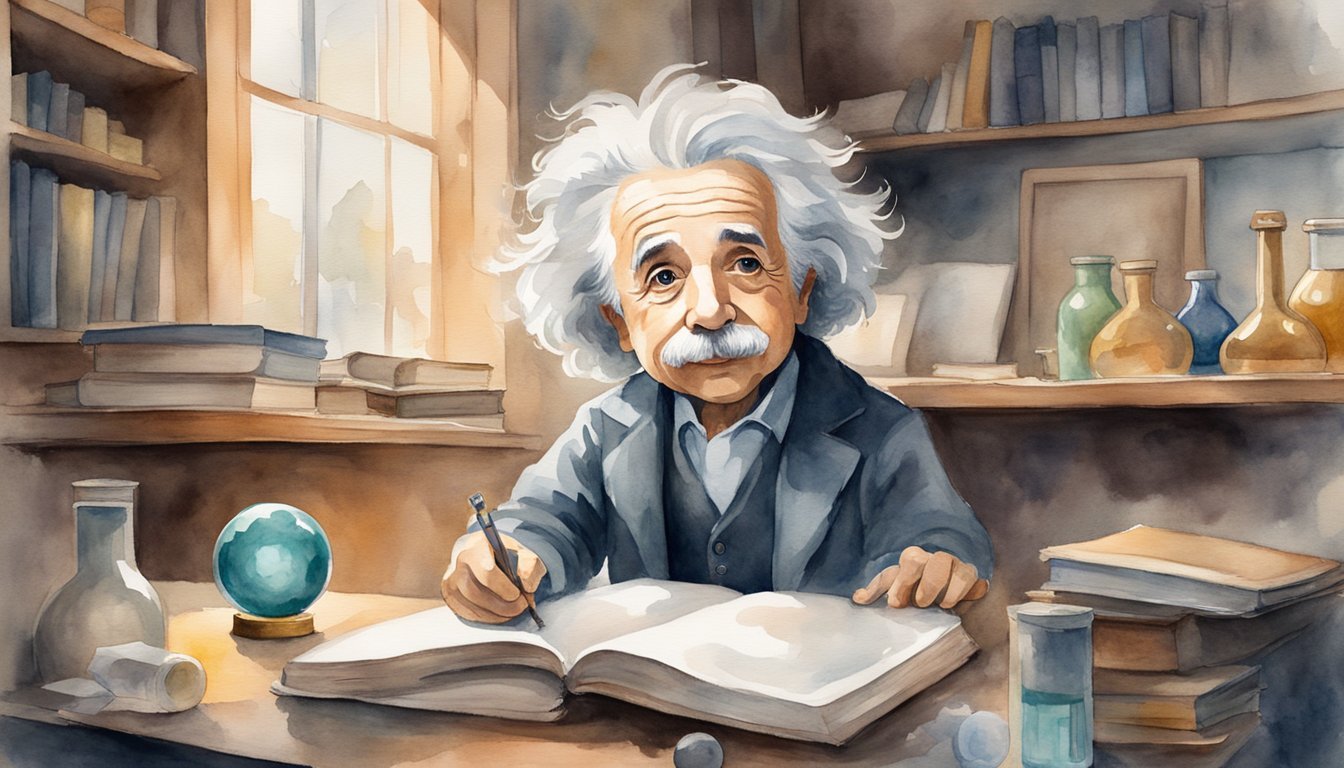Early Life and Education of Albert Einstein

Albert Einstein, a renowned physicist known for his groundbreaking theories in science, had an intriguing early life and academic journey that set the foundation for his extraordinary contributions to physics.
Born in Ulm, Germany
Albert Einstein was born to Jewish parents on March 14, 1879, in the city of Ulm in Württemberg, Germany. Within a year of his birth, due to the failure of his father’s featherbed business, the family moved to Munich where Einstein began his early education.
The Influence of a Compass
At the age of five, Einstein encountered a simple compass that sparked his lifelong fascination with the mysteries of the natural world. The needle’s consistent northward swing, seemingly powered by an invisible force, mesmerized him and planted the seed for his future explorations into the realm of physics.
School Days and Love for Math
Einstein’s interest in science and mathematics was evident from a young age. He attended the Luitpold Gymnasium in Munich, where he showed a particular aptitude for mathematics, but clashed with the rote-learning style of the school’s pedagogy.
Studies at Zürich and the Swiss Patent Office
After leaving the gymnasium, Einstein continued his education at the Polytechnic School in Zürich, Switzerland. Upon graduation in 1900, he worked as a clerk at the Swiss Patent Office, which allowed him ample time to ponder scientific puzzles and subsequently develop the theories that would revolutionize our understanding of the universe. During this period, Einstein’s budding theories would lay the groundwork for advances in both relativity and quantum physics.
Scientific Achievements and Impact

Albert Einstein’s contributions to science transformed our understanding of the universe. He published groundbreaking papers, formulated the theories of relativity, and made significant advances in theoretical physics.
The Miracle Year Papers
In 1905, during what is known as his Annus Mirabilis or “Miracle Year,” Einstein released several pivotal scientific papers. These works included his exposition on the photoelectric effect, which describes how light interacts with matter and contributes to the field of quantum physics. His research in this area later earned him the Nobel Prize in Physics in 1921.
Theory of Relativity and Nobel Prize
Einstein is perhaps best known for his development of the Theory of Relativity, encompassing both special and general relativity. The Special Theory of Relativity, introduced in 1905, included the famous equation E=mc² demonstrating the relationship between energy (E) and mass (m) with the speed of light (c) squared as a constant. The General Theory of Relativity, formulated over the next decade, revolutionized the understanding of gravity as a curvature in spacetime caused by matter.
Research on Brownian Motion and Photons
His 1905 paper on Brownian Motion provided empirical evidence for the existence of atoms by explaining the random movement of particles in fluid, which supported the atomic theory. Moreover, Einstein’s work on the quantum theory of light proposed that light could be considered as a collection of particles known as photons, which was fundamental to the quantum physics that followed.
Global Fame and the Princeton Years
By the time Einstein emigrated to the United States, he was a global scientific celebrity. During his tenure at Princeton University in New Jersey, he continued to work on unifying the forces of the universe and contributed to the discussion and understanding of black holes and the expansion of the universe. He also engaged in efforts related to World War II, though he was a vocal pacifist. Einstein became a US citizen in 1940 and remained at Princeton until his death in 1955.

